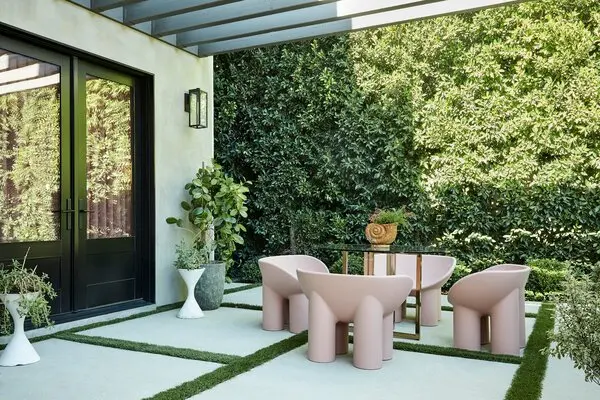Urban gardening has become a vibrant trend that not only enhances the aesthetics of city living but also promotes sustainability and self-sufficiency. With more people flocking to cities, where green space is often limited, urban gardening offers a solution to the growing desire for fresh, home-grown produce and a closer connection to nature. Whether you have a small balcony, a rooftop, or a pocket-sized backyard, mastering urban gardening can transform even the most compact spaces into thriving green havens. This guide will walk you through the essential steps to create and maintain a successful urban garden that suits your unique space and lifestyle.
Step 1: Assess Your Space and Set Goals
Before diving into planting, take a moment to assess your available space and think about your gardening goals. Every urban garden has its own set of challenges, from limited sunlight to restricted growing areas, and understanding these constraints is the first step toward success.
If you’re working with a balcony, observe the direction in which it faces. Does it receive full sun, partial shade, or is it mostly shaded? Sunlight is crucial for plant growth, so it’s important to know how much light your garden will receive throughout the day. Similarly, assess your available floor space, vertical surfaces (like walls and railings), and any opportunities for hanging planters or wall-mounted shelves.
Consider your goals as well. Are you aiming to grow a few herbs for culinary use, or do you have the ambition to cultivate vegetables for an entire season? Urban gardening can range from simple decorative plants to more intensive vegetable gardening, so having a clear vision will help guide your decisions.
Step 2: Choose the Right Containers
Container gardening is an essential element of urban gardening. Since many city dwellers lack traditional garden beds, the right containers will be crucial for growing plants successfully. The choice of container depends on the types of plants you intend to grow, as well as the space and aesthetic you want to create.
For herbs and small plants, lightweight pots and hanging baskets can work beautifully. Larger plants, such as tomatoes, peppers, or dwarf fruit trees, will require more substantial containers that allow for proper root development. Opt for containers with good drainage to avoid waterlogging, which can damage plant roots.
Consider the material of the containers as well. Terracotta pots are breathable but may dry out quickly, while plastic containers retain moisture but can overheat in direct sunlight. Wooden planters, especially those made from cedar or redwood, can be both aesthetically pleasing and functional, offering excellent insulation for plant roots. If you’re conscious of environmental sustainability, there are also biodegradable pots made from coconut fibers or recycled plastic.
Additionally, make use of vertical gardening structures such as vertical planters, shelves, or stacked pots. These are excellent for maximizing small spaces and can be a great way to cultivate climbing plants like peas or tomatoes.
Step 3: Choose the Right Plants for Your Urban Garden
Not all plants thrive in urban environments, so it’s important to choose varieties that are well-suited for the constraints of your space. Focus on plants that can handle the specific conditions of your urban environment, such as limited sunlight, wind exposure, and temperature fluctuations.
For a sunny balcony, consider planting herbs like basil, oregano, and rosemary. These plants love sunlight and are easy to maintain. Vegetables like lettuce, spinach, and radishes also do well in smaller spaces, requiring little room to grow while offering fast harvest times. For those with more space, consider larger plants like tomatoes, peppers, or dwarf fruit trees like lemons or figs. Many cities also offer a variety of dwarf or compact plant varieties, which are specifically bred for urban gardening.
If your space is shaded or only receives a few hours of sunlight, opt for shade-tolerant plants such as leafy greens (lettuce, kale), herbs like mint and parsley, or flowering plants like begonias and impatiens. Be sure to choose plants based on the light conditions you have in your space to ensure they thrive.
Step 4: Understand Soil and Fertilization
Soil quality plays a significant role in the success of any garden. In containers, it’s important to use a high-quality potting mix designed for container plants. Avoid using garden soil, as it can become compacted in pots and doesn’t provide adequate drainage.
Look for potting soil that is rich in organic matter and has good aeration, as this will allow plant roots to grow freely. You can also mix in compost to enrich the soil and provide essential nutrients for your plants. For an added boost, consider organic fertilizers that are well-balanced and promote strong, healthy growth without relying on harmful chemicals. Liquid fertilizers or slow-release granules are easy to apply and can be mixed directly into your potting soil.
Regular fertilization is key, especially for edible plants like vegetables and herbs. As container plants rely on the nutrients in the potting soil, it’s important to supplement this with fertilizer every few weeks to ensure your plants have the nutrients they need to thrive.
Step 5: Watering and Maintenance
Watering is one of the most crucial aspects of urban gardening. With limited space and containers, plants are more susceptible to drying out or becoming waterlogged, so striking a balance is key.
It’s important to water your plants consistently, but avoid overwatering, as this can lead to root rot. Container plants tend to dry out faster than those planted in the ground, so they may need to be watered more frequently, especially during hot weather. To avoid soggy roots, ensure your containers have good drainage holes.
A good rule of thumb is to water your plants when the top inch of soil feels dry to the touch. Early morning or late evening is the best time to water, as this allows the water to penetrate the soil before the heat of the day causes it to evaporate. Consider using a watering can with a long spout for precision or an irrigation system if you have a larger setup.
In addition to watering, urban gardens require routine maintenance. Regularly check your plants for pests, dead leaves, or signs of disease, as the confined environment of urban spaces can sometimes encourage these issues. Prune dead or damaged foliage to encourage healthy growth, and keep an eye on plant health to prevent issues from becoming widespread.
Step 6: Experiment and Enjoy the Process
Urban gardening is as much about creativity and enjoyment as it is about practicality. Don’t be afraid to experiment with different plant varieties, layouts, and garden designs. Mix decorative plants with edible ones for a functional yet beautiful space, and experiment with unique containers or vertical garden systems.
Gardening in an urban environment offers a chance to create a green oasis amidst the hustle and bustle of city life. As you become more familiar with your space and your plants’ needs, you’ll find yourself becoming more skilled at adapting to challenges and optimizing your urban garden for success.
The beauty of urban gardening is that it’s a personal, evolving process. Whether you’re growing fresh herbs for your kitchen, cultivating a colorful flower display, or raising vegetables for your table, urban gardening allows you to reconnect with nature in the midst of a concrete jungle. So take your time, learn from your experiences, and most importantly—enjoy the growth of both your garden and your gardening skills.
Conclusion
Mastering urban gardening may seem daunting at first, but by following these step-by-step guidelines, you can create a thriving garden in any city space. From assessing your space and selecting the right plants to understanding soil and watering needs, each step brings you closer to cultivating a beautiful and functional urban garden. By embracing sustainability, creativity, and careful planning, you can transform your outdoor area into an oasis that not only enhances your home but also contributes to a greener, more sustainable urban environment.

